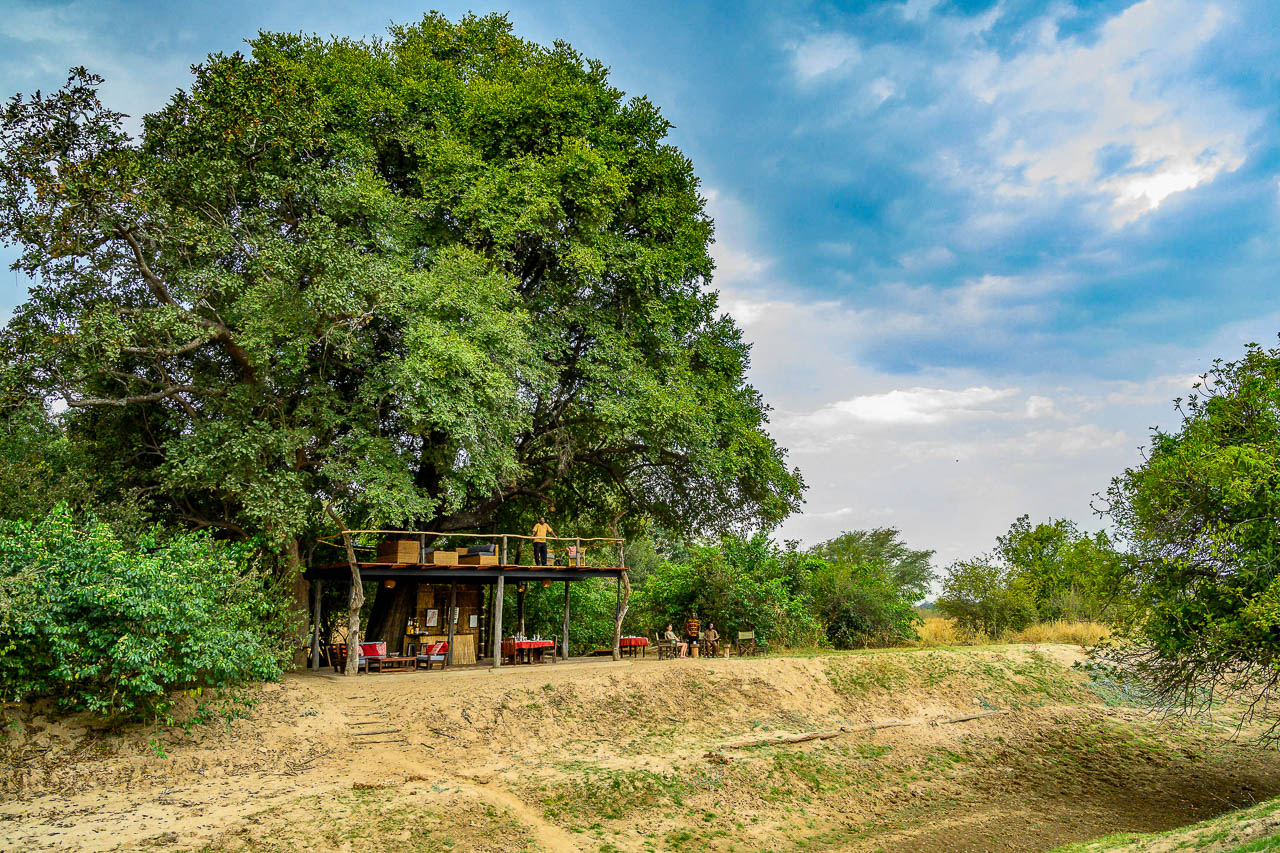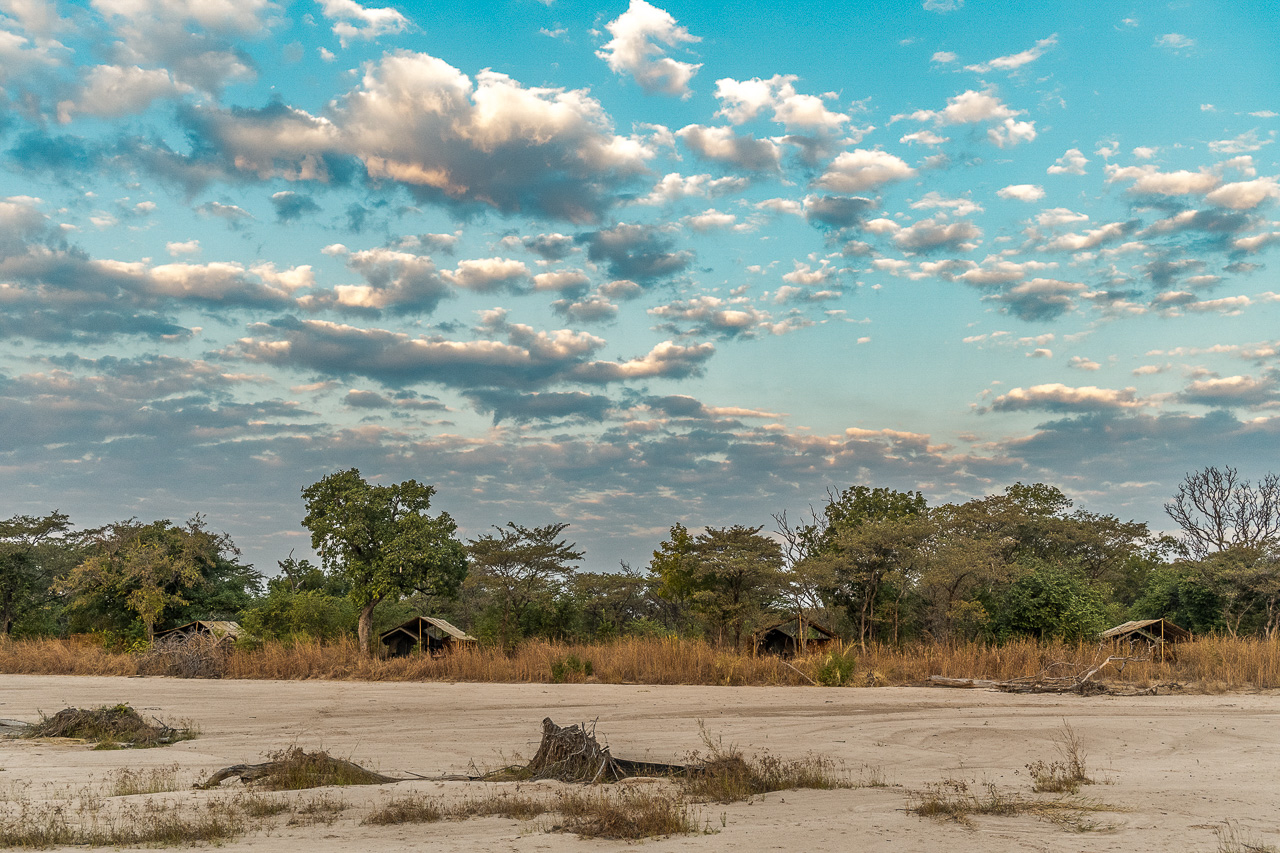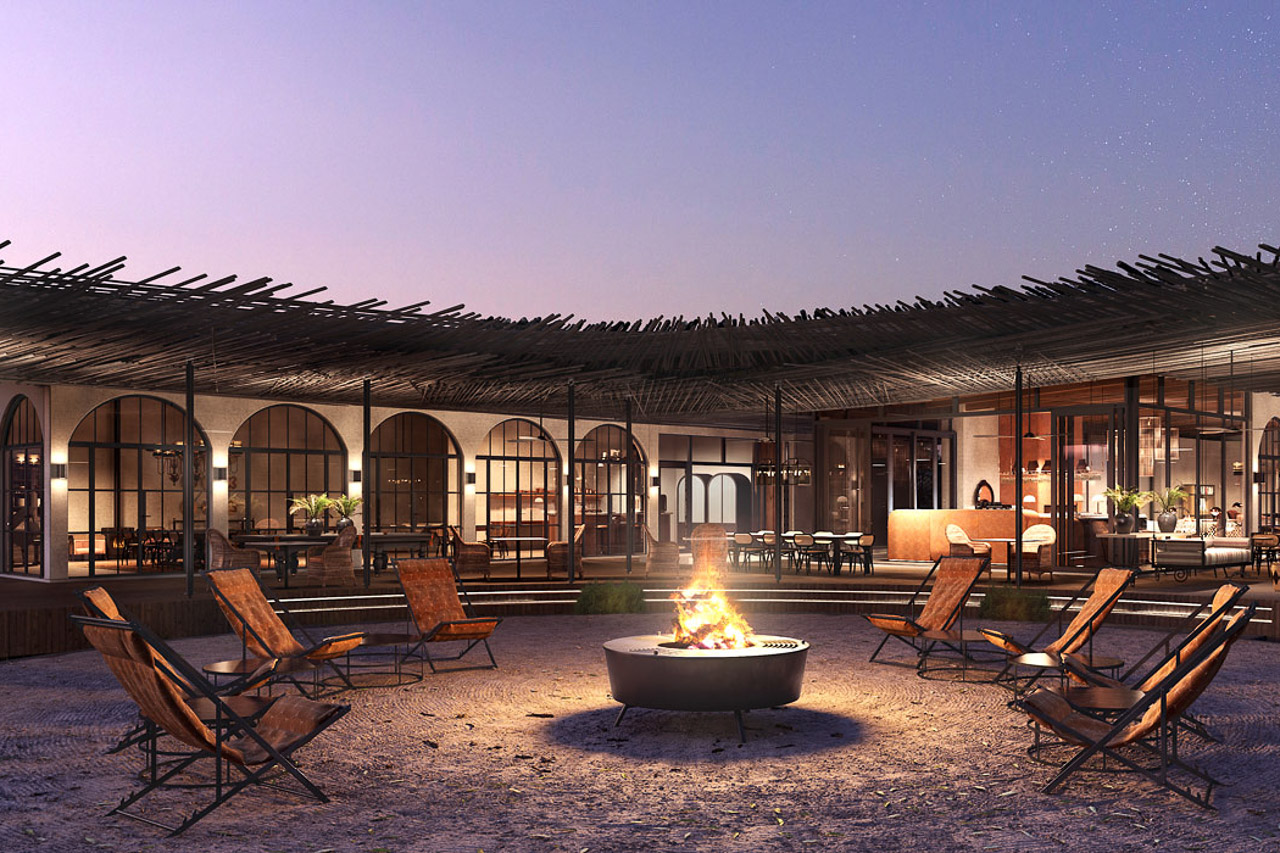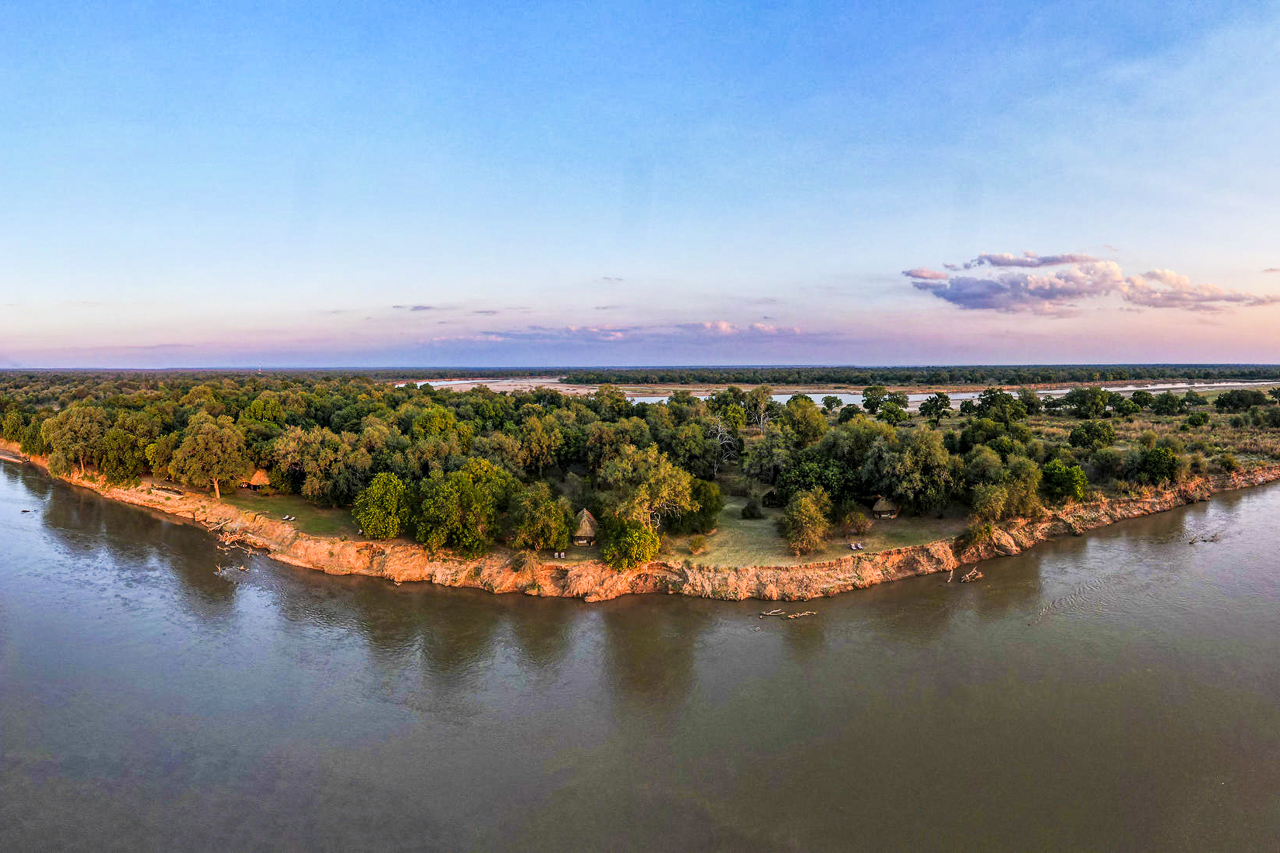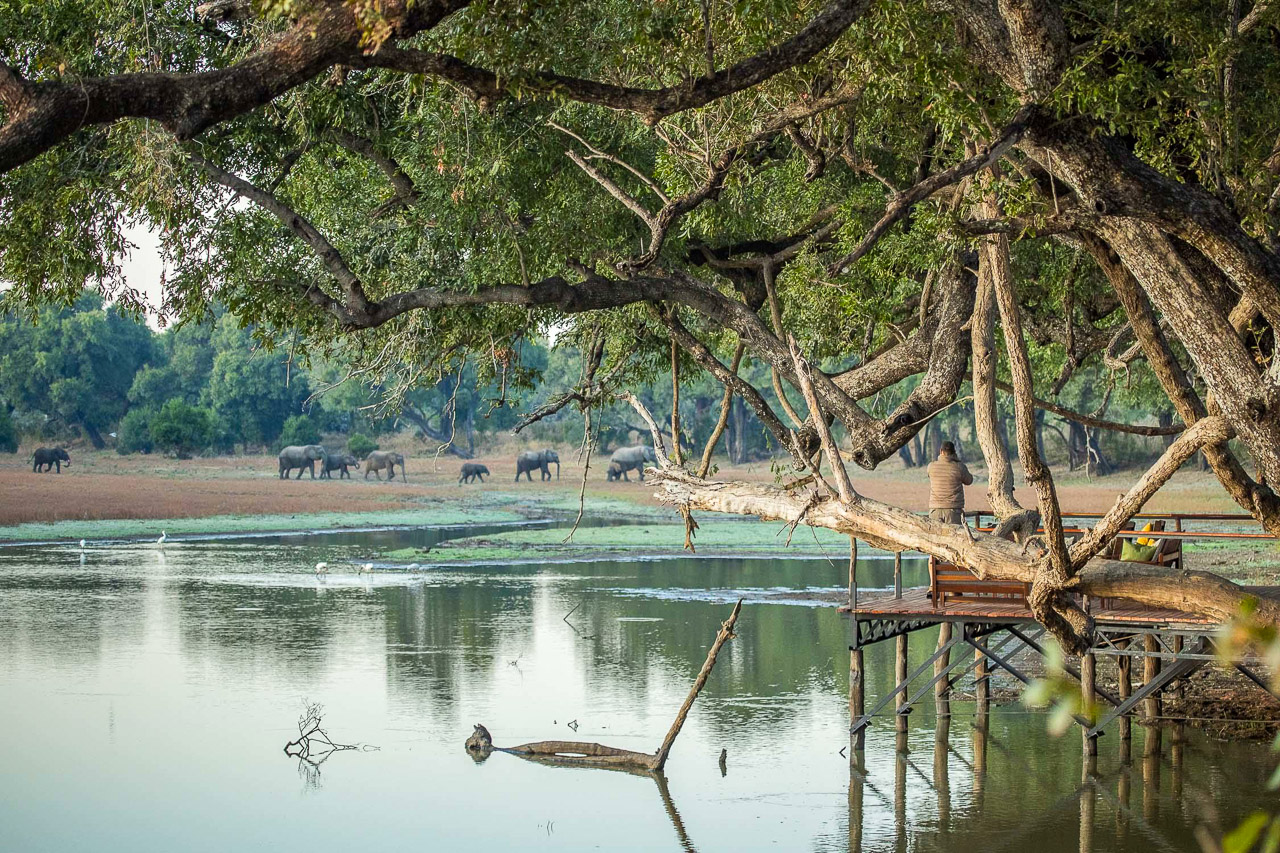Every room has a covered deck built out over the water with two chairs, a small table and spectacular river views. The camp is solar powered. The dining tent and lounge are airy and open-plan with a small library, and a bar is carved out of a 1000-year-old tree trunk. Further down on the riverbank, to the front of the main building, is a deck stretching out into the river - perfect for eating breakfast and watching the wildlife.
The camp has its own hides: The Hippo Hide located down by the river, the Elephant Hide built in an ebony tree, the Bee-Eater Hide down by the river with views of the embankment and the carmine bee-eater bird colony, and a mobile hide, which is forever changing location. These hides can be visited during lunchtime or as part of a game drive. The Elephant Hide is located close to the camp; guests are informed when elephants are crossing the river and those who wish to see them are driven to the hide.
- Images of Kaingo Elephant Hide
- Images of Kaingo Hippo Hide
- Images of Kaingo Carmine Hide
The area between Kaingo Camp and Mwamba Camp is spectacularly beautiful with a highly varied terrain that supports a huge variety of wildlife. Animals can be seen at the river, in the lagoons (Fish Eagle and Pelican lagoons being the largest), on the dry, sweeping plains (Lion Plain, for example) and in the ebony and mopane woodlands. Derek Shenton's father was a park ranger here and he has passed on a rich wealth of knowledge to his son.
Large colonies of bee-eaters can be photographed on the banks of the Luangwa River throughout September and October.
Thornicroft's giraffe, Cookson's wildebeest and Crawshay's zebra are unique to South Luangwa National Park.
Guests may also wish to spend the night sleeping out on the elephant hide. The fearless are driven out to the hide after dinner at Kiango before the real adventure begins!
Transfer to Mwamba Camp can be made on foot. As alternatives, guests may either choose from a 20-minute vehicle journey or incorporate the trip into a game drive. The walk takes around 3 hours (steady pace) and is tackled early due to the heat, particularly in October when temperatures soar. Luggage is taken on ahead by vehicle. The walk offers guests the possibility of encountering lion, elephant, hippo and buffalo.
Learn more about these areas



















